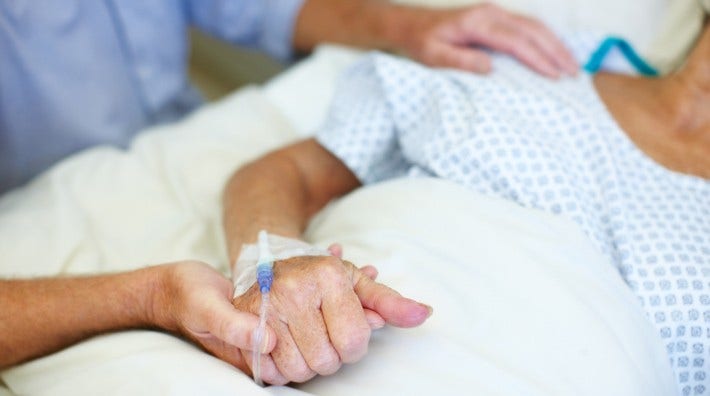
Cancer
Cancer, a complex group of diseases characterized by the abnormal growth of cells, remains one of the leading causes of morbidity and mortality worldwide. While certain risk factors for cancer, such as genetics and environmental exposures, are beyond our control, there are numerous steps individuals can take to reduce their risk of developing . In this article, we explore some effective strategies for preventing and promoting overall health and well-being.
Understanding Cancer: Types, Causes, and Risk Factors

1. Maintain a Healthy Diet:
Consuming a balanced diet rich in fruits, vegetables, whole grains, and lean proteins can help reduce the risk of cancer. Aim to incorporate a variety of colorful fruits and vegetables into your meals, as they contain essential vitamins, minerals, and antioxidants that support immune function and help combat inflammation.
2. Stay Active:
Regular physical activity not only helps maintain a healthy weight but also reduces the risk of certain types of cancer, including breast, colon, and prostate cancer. Aim for at least 150 minutes of moderate-intensity aerobic activity or 75 minutes of vigorous-intensity activity each week, along with muscle-strengthening exercises on two or more days per week.
3. Avoid Tobacco Products:
Tobacco use is a major risk factor for several types of , including lung, mouth, throat, and bladder cancer. If you smoke or use other tobacco products, quitting is one of the most important steps you can take to reduce your risk. Seek support from healthcare professionals, quit-smoking programs, or support groups to help you quit for good.
4. Limit Alcohol Consumption:
Excessive alcohol consumption has been linked to an increased risk of several cancers, including breast, liver, and colorectal cancer. To reduce your risk, limit alcohol intake to no more than one drink per day for women and two drinks per day for men.
5. Cancer Protect Your Skin:
Skin cancer is one of the most common types of cancer, but it is also one of the most preventable. Protect your skin from harmful ultraviolet (UV) radiation by wearing sunscreen with a high SPF, seeking shade during peak sun hours, wearing protective clothing, and avoiding indoor tanning beds.
6. Get Vaccinated:
Certain viruses, such as human papillomavirus (HPV) and hepatitis B virus (HBV), are known to increase the risk of certain cancers. Vaccines are available to protect against these viruses and can significantly reduce the risk of developing associated , such as cervical cancer (HPV) and liver cancer (HBV).
7. Cancer Practice Safe Sex:
Practicing safe sex and reducing the number of sexual partners can help reduce the risk of sexually transmitted infections (STIs) that are linked to an increased risk of certain cancers, such as cervical cancer (HPV) and liver cancer (HBV and HCV).
8. Get Screened Regularly:
Early detection through cancer screening tests can significantly improve treatment outcomes and survival rates for certain types of cancer. Talk to your healthcare provider about recommended screening tests based on your age, gender, and personal risk factors.
9. Maintain a Healthy Weight:
Aim to achieve and maintain a healthy weight through a combination of healthy eating habits and regular physical activity Situs Slot Gacor.
10. Practice Mindful Living:
Chronic stress, poor sleep quality, and unhealthy lifestyle habits can weaken the immune system and contribute to inflammation, which may increase the risk of cancer. Practice stress-reduction techniques such as mindfulness meditation, yoga, or deep breathing exercises, and prioritize getting adequate sleep each night.
By adopting these lifestyle habits and making health-conscious choices, you can empower yourself to reduce your risk of developing and improve your overall quality of life. Remember that prevention is key, and small changes in daily habits can make a significant difference in long-term health outcomes. Always consult with your healthcare provider for personalized guidance and recommendations based on your individual risk factors and medical history.

Managing Cancer: Strategies for Treatment and Care
Cancer, a formidable adversary, often requires a comprehensive approach to treatment and care. While the journey may be challenging, advancements in medical science and supportive care have significantly improved outcomes for individuals diagnosed with cancer. In this article, we explore various strategies for managing , encompassing medical treatments, supportive therapies, and lifestyle adjustments.
1. Medical Treatments Cancer:
- Surgery: Surgical removal of tumors is often the first-line treatment for localized cancers.
- Chemotherapy: Chemotherapy uses drugs to kill cancer cells or slow their growth and is administered orally or intravenously.
- Radiation Therapy: Radiation therapy utilizes high-energy rays to destroy cells and shrink tumors.
- Immunotherapy: Immunotherapy boosts the body’s immune system to fight and may be used alone or in combination with other treatments.
- Targeted Therapy: Targeted therapy targets specific genetic mutations or proteins unique to cancer cells, minimizing damage to healthy cells.
2. Supportive Therapies:
- Pain Management: Pain medications, nerve blocks, and other interventions help alleviate-related pain.
- Nutritional Support: Proper nutrition is crucial for cancer patients to maintain strength and support healing. Dietitians can provide personalized dietary guidance.
- Emotional Support: Counseling, support groups, and therapy help patients cope with the emotional toll of cancer diagnosis and treatment.
- Palliative Care: Palliative care focuses on improving quality of life for patients with serious illnesses, providing symptom management and support for physical, emotional, and spiritual needs.
3. Lifestyle Adjustments:
- Exercise: Regular physical activity improves energy levels, reduces treatment-related side effects, and enhances overall well-being.
- Healthy Diet: A balanced diet rich in fruits, vegetables, whole grains, and lean proteins supports immune function and aids in recovery.
- Stress Reduction: Stress-reduction techniques such as meditation, yoga, and deep breathing exercises help manage anxiety and promote relaxation.
- Smoking Cessation: Quitting smoking reduces the risk of recurrence, improves treatment outcomes, and enhances overall health.
4. Monitoring and Follow-Up:
Patients undergoing cancer treatment require regular monitoring and follow-up appointments with their healthcare providers. These appointments allow for assessment of treatment response, management of side effects, and adjustments to the treatment plan as needed.
5. Clinical Trials Cancer:
Participation in clinical trials offers patients access to cutting-edge treatments and therapies not yet widely available. Clinical trials also contribute to advancements in cancer research and treatment.

6. End-of-Life Care:
In cases where cancer cannot be cured, end-of-life care focuses on ensuring comfort, dignity, and quality of life for patients and their families. Hospice care provides specialized support and symptom management for patients nearing the end of life.
Understanding Cancer: Types, Causes, and Risk Factors
Managing requires a multidisciplinary approach, involving medical treatments, supportive therapies, lifestyle adjustments, and ongoing monitoring. By working closely with healthcare providers, embracing supportive resources, and making positive lifestyle changes, individuals diagnosed with cancer can optimize their treatment outcomes and quality of life. Remember, every journey is unique, and support is available every step of the way.
Read More Article About “Zimbabwe: A Tale of Becoming the Poorest Nation in the World“








